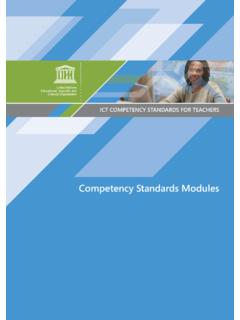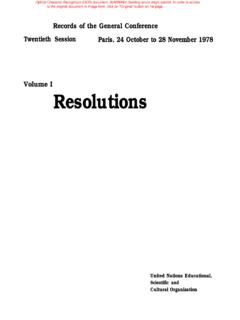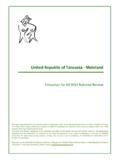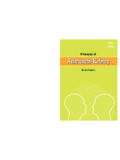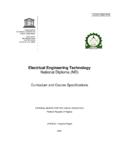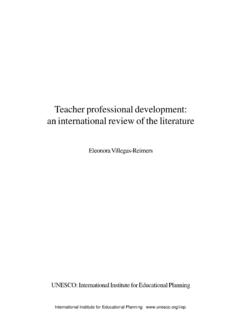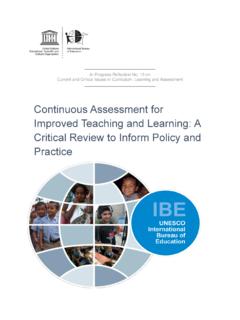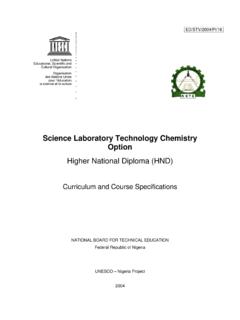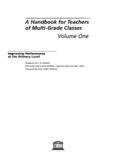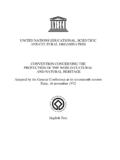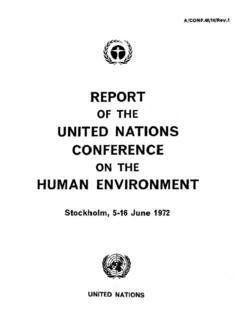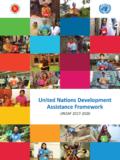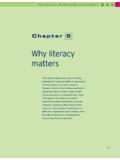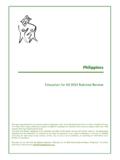Transcription of Education and Population Dynamics - UNESCO
1 united nations educational , scientific and Cultural Organization Education and Population Dynamics : Mobilizing Minds for a Sustainable Future EPD-99/R S/ 1 March 1999 CONTENTS PREFACE BY THE DIRECTOR-GENERAL OF UNESCO EXECUTIVE SUMMARY Education AND Population Dynamics 1. Education - a force for shaping the future Definitions Education : a right and a tool 2. World Population situation Impact on developing countries Urbanization Declines in fertility and mortality HIV/AIDS 3. The demographic challenge to Education Shortages and overcrowding Conditions of learning Progress and problems ICPD objectives 4. The impact of Education on Population - a complex, multifaceted and evolving relationship The demographic transition Lowering of socio-economic thresholds Maternal and child mortality Missing girls Education and fertility The cumulative impact of Education - an African example 5.
2 A closer look at half of humanity -the nine high- Population developing countries The decline of illiteracy The decline of fertility The femininity ratio 6. Targeting Population and health objectives through Education The nature of Population Education Life skills Addressing the needs and situation of women Testing innovative approaches and practices Impact of Population Education summing up 7. Education and Population in the quest for development The Population and development debate Which comes first, Population regulation or development? Sustainable development Equitable development Ensuring equal rights and opportunities for women Education - the intervening variable summing up 5 7 11 11 12 13 15 16 16 17 17 18 19 19 21 22 22 23 25 25 26 27 29 30 31 32 33 35 35 36 37 38 39 41 42 42 43 43 44 45 45 46 8.
3 Conclusions 47 BIBLIOGRAPHY 51 Preface by the Director-General of UNESCO Almost five years after the International Conference on Population and Development (ICPD, Cairo, 1994), UNESCO has produced this monograph, exploring the multiple interactions between Education and Population . It is a contribution to the ICPD+S review process, aimed at assessing the extent to which the challenges identified in Cairo are now being met. Far from being an isolated event, the ICPD was one of a series of world conferences convened or supported by the united nations during the 1990s to examine the challenges facing the world community on the eve of a new millennium. Appropriately, the subject and goal of the first in the series of world conferences of the 1990s Education for All (Jomtien, 1990), was to become - as this monograph demonstrates in the case of the ICPD - an essential means of action for pursuing the objectives of all subsequent conferences.
4 This is hardly surprising. Development, above all else, requires new ways of thinking and acting. Education is the principal means for responding to new situations, requirements and possibilities with fresh thinking and effective action. Thus, the promotion of Education became a recurrent theme in all the world conferences. Whether the issue be the reduction of poverty, the preservation of the environment, the improvement of urban life or the promotion of the rights of women, Education is a part of the answer, often a very sizeable part. It is a vital force in the struggle to shape a happier future for humanity. Education , as the monograph demonstrates, has a powerful and pervasive impact in reducing mortality and fertility rates and, in tandem with communication, accelerating the demographic transition.
5 Even for those ardently convinced of the power of Education to improve the human condition, the impact of relatively small amounts of schooling is impressive. Imagine what might be achieved if every child - boy and girl alike - were to receive eight years of quality Education : Education that teaches the art of critical thinking, the skills of knowledge-seeking and the duty to act ethically and responsibly towards others. The impact of this could change2 the world. We are, alas, still very far from providing Education of such quality to the vast majority of the world s children. As concerns their parents, the available educational opportunities are even more meagre. One of the major failings of past decades has been the serious under-investment in Education - not only of money, but also of imagination.
6 If society expects Education to help pull millions out of poverty, then in the poorest countries Education itself must first be rescued from the poverty that besets and enfeebles it. The relationship between Education and Population cannot be understood in isolation, but only in the context of the struggle for development and sustainability. What ultimately counts is the quality of life people enjoy and the communities they form and foster. A world in which the richest fifth of humanity consumes 150 times more than the poorest fifth - and recent studies suggest this is the current state of affairs - is rendered fragile both by the excesses of the rich and the desperation of the poor. To restore a sustainable balance we must begin by forging a new sense of community based on mutual responsibility and what I have termed an ethics of the future; a far-sighted acceptance of our shared interdependence and the long-term action that it implies.
7 The type of Education that can contribute to this ambitious yet essential goal is, evidently, an Education of both breadth and quality. It is an Education that not only activates the mind and imagination, but also touches the conscience, constantly reminding us of our obligations to one another. While the world desperately needs new knowledge and technologies, we must pursue them with the awareness that there are no purely technical solutions to the major problems of the present or the future. Indeed, most problems are due to human factors and failings. There is much wisdom in the saying: we have met the enemy and he is us . Thus, the battle we must win is not so much against external forces as over ourselves and our failure to have created a world in which all have a chance and a share.
8 An Education of quality must provide a critical reflection on the human situation, especially its failures and injustices. But, in addition to telling us what is, it must also help us to imagine what might be and how we might set about achieving it. One of the most useful outcomes of the development conferences of the 1990s is an almost tangible awareness that development is holistic. Through this perspective Education emerges - both in the work programmes and evaluations of the conferences - as an essential means to a wide diversity of ends. It is with an acute awareness of this fact that UNESCO , the united nations Organization charged with responsibility for Education , has sought to cooperate fully and effectively with all its partners, working with them at all levels: international, regional and especially national.
9 This specific responsibility of UNESCO s does not imply a claim of our Organization upon the work of others. On the contrary, it fosters a close complementarity and productive synergy. Our working relations with the UNFPA, I might note here, have been especially close and fruitful. UNESCO s contribution to the objectives set out in the ICPD Programme of Action is in line with the objectives of its Medium-Term Strategy for 1996-2001. Special emphasis was placed on increasing knowledge, public awareness, understanding and commitment concerning Population and sustainable development issues. In this context, the Transdisciplinary Project Educating for a Sustainable Future (EPD) was conceived as the tool UNESCO should use to implement this task. The Project was envisaged as a major innovation, intended to promote interdisciplinary and intersectoral work within the Organization and to improve inter-agency co-operation in this field.
10 Education plays a vital role in the quest to ensure the basic needs and well- being of all the world s people and this is the ultimate goal of the Population policies that UNFPA is pursuing. We also share the same sense of priorities. The success of the ICPD Programme of Action hinges on the empowerment of women through Education and other means of action. This is a goal of UNESCO as well, one which we are pursuing in the closest cooperation with UNFPA and other partners. i-, 11 March 1999 Federico Mayor 6 Executive Summary The International Conference on Population and Development (ICPD, Cairo, 1994) addressed the inter-related issues of Population , economic development and sustainability. This monograph examines these issues, especially the first, in relation to Education .
